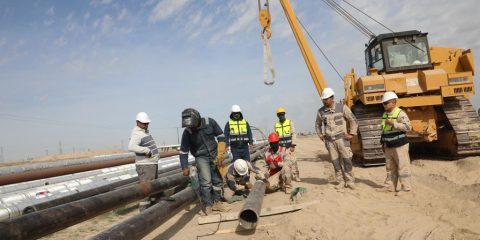The Secret Eye Inside Mosul
Shortly after the Islamic State swept into Iraq, in June, 2014, a clandestine blog called Mosul Eye appeared on the Internet. It provided details about life under the caliphate—initially offering hourly reports regarding roads around Mosul that were safe to travel, and then, in the following weeks, reporting on the dawning anxiety about the heavily […]Robin Wright writes for The New Yorker:
Shortly after the Islamic State swept into Iraq, in June, 2014, a clandestine blog called Mosul Eye appeared on the Internet. It provided details about life under the caliphate—initially offering hourly reports regarding roads around Mosul that were safe to travel, and then, in the following weeks, reporting on the dawning anxiety about the heavily armed isis fighters, the power blackouts, the rising prices, the chaos in local markets, the panic over food shortages, and the occupiers’ utter brutality. Over the next year, Mosul Eye expanded into a Facebook page and a Twitter account. The posts were determinedly stoic—melancholic and inspiring at once.
The blog is run anonymously by a self-described “independent historian inside Mosul.” Iraqis and Mideast scholars believe that the site is for real. Rasha al Aqeedi, a scholar from Mosul who now writes from Dubai, told me that “the information is reliable,” and added, “The perspective and ideology, however, reflect Mosul’s young intelligentsia: the will to review Islam and question religious texts and the fault lines along historic narratives.”
As a historian, the blogger documented the troubles Mosul faced under Saddam Hussein and its fate after the U.S. invasion, in 2003, when various armed factions seized control of the city. On the Web site, he noted, “Some speak about Mosul as if it is a pure Sunni city, and with that, they grant a religious character to it, which is contrary to the historical and social facts. Because this city is characterized over long historical eras by patterns of harmonious coexistence of ethnic, religious, and cultural diversity, religion was never the predominant character of this diversity, but urbanization.”





